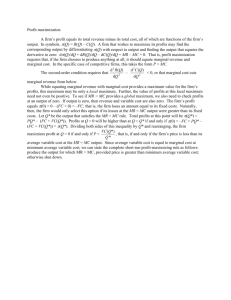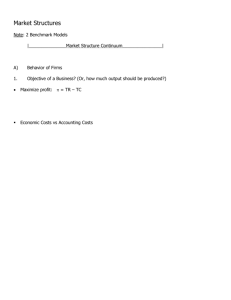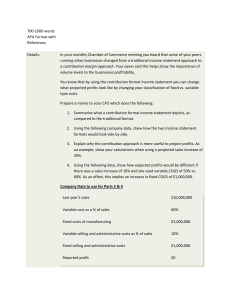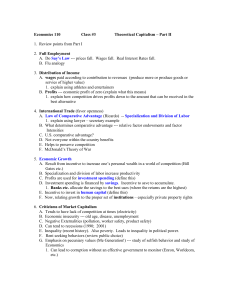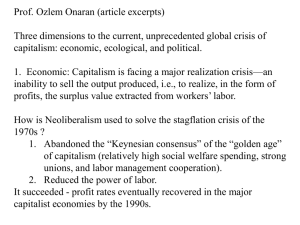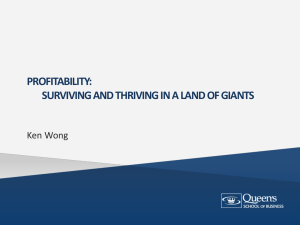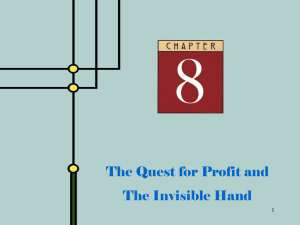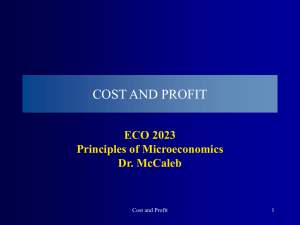Total Cost - Principles of Microeconomics
advertisement
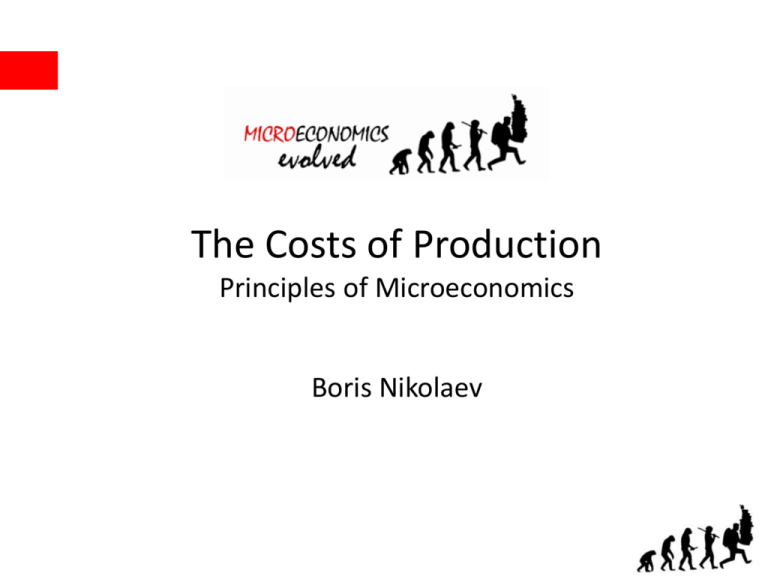
The Costs of Production Principles of Microeconomics Boris Nikolaev It’s business time. • Firms are in the business of making profits. max Profit = TR – TC Sneak Preview MR=MC So it’s all about efficiency Profits • Are profits bad? • What is the function of profits in a free market economy? • In a competitive market profits come not from increase in price, but from decrease in the cost of production. • http://money.cnn.com/magazines/fortune/fortune500/2010/full_list/ (500 most profitable companies) Corporate Profits after tax CP/GDP The Weed Trail [read here] Marxist View • The stagnating wages since the 1970s – – – – – Technology World war II Outsourcing Women in the labor force Immigration • Problem of effective demand – Work more hours – Borrowing binge (mortgage debt, credit cards) • Greatest profit boom (in the history of the world) – Marginal productivity, wages, and profits Productivity vs Wages What do you do with the profits? • CEO salaries [Forbes list] • Mergers & Acquisitions • Lend to employees (e.g. GM, IBM, etc.) Costs • Resources are scarce, productive, and have alternative uses. Implicit cost is the opportunity cost of the resource you own (the benefit you could have extracted from it from its next best use). Explicit costs are the direct cash payments you make to use resources you don’t own such as wages, rent, insurance, taxes, etc. Economic vs Accounting Profit Practice Question Your current job pays $50K/year. You have $20K savings that earn you $3K interest a year. You own a garage, which you rent for $12K/ year. You decide to invest your savings and use your garage to start your own business. Did you make a good economic decision? Total Revenue Explicit Costs labor food Total Cost $105K $21K $20K $41K Implicit Costs salary interest rent Total Implicit Cost Accounting Profit _____ Economic Profit / Loss______ _____ _____ _____ _____ Production in the Short Run Q= f(L,K) Class demonstration The Law of Diminishing Marginal Returns Practice Question # fishermen Fish caught 1 15 2 35 3 58 4 80 5 95 6 105 7 108 8 105 Input (L) TP = f(L) MP of labor Assume that only one input (L) is relevant in production. The wage / worker = $175 and one pound of fish is selling for $10 MRP What about costs? • • • • • • • • Short Run vs Long Run Costs Fixed Costs (FC) Variable Costs (VC) Total Cost (TC) = FC + VC Average Cost (AC) = TC/Q AFC = FC/Q AVC=VC/Q AC = AFC + AVC Total and Marginal Cost Marginal and Average Cost Cost in the Long Run Diseconomies of scale LR Average Cost Curve Economies of Scale Sources of Economies of Scale • Spread of “overhead,” fixed cost over bigger production. • Labor specialization. • Technology. • Learning by doing • Agglomeration economies. LR Cost Curves Note on International Trade • What goods are produced and where? • David Ricardo (1800’s) – comparative advantage. • Heckscher & Ohlin (1920-30’s) – differences in factor endowments. Example: Developed countries export more capital intensive goods (cars, airplanes, etc…) and import from developing countries more labor intensive goods (clothing, agricultural products, etc…) • Empirical studies. Krugman’s Model Uses economies of scale to explain international trade. 1. Mass production decreases average cost (ES) 2. Consumers prefer diversity of products Each country specializes and then trades. This is how countries with similar factor endowments engage in trade (e.g. Japan sells Toyota to US, US sells GM to Germany, etc…)

